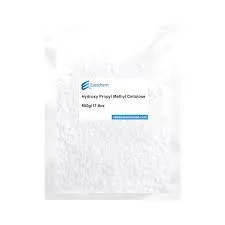
Dec . 01, 2024 12:02 Back to list
Applications and Benefits of Hydroxypropyl Methylcellulose in Various Industries
The Versatile Uses of Hydroxypropyl Methylcellulose
Hydroxypropyl methylcellulose (HPMC) is a widely used cellulose derivative that has garnered attention in various industries due to its unique properties. As a non-ionic polymer, HPMC is derived from cellulose, a natural polymer found in plant cell walls. Its versatility stems from its ability to form films, gel, and emulsions, making it a valuable ingredient in pharmaceuticals, food products, construction, and personal care items. This article delves into the myriad applications of HPMC, highlighting its importance and functionality across different sectors.
Pharmaceutical Applications
In the pharmaceutical industry, HPMC is primarily utilized as a viscosity-increasing agent and as an excipient in drug formulations. Its ability to form aqueous gels allows for sustained-release formulations, which are essential in providing a prolonged therapeutic effect. HPMC helps control the release rate of active pharmaceutical ingredients (APIs), making it a popular choice for tablets and capsules. Additionally, it exhibits excellent film-forming properties, which are crucial for coating solutions. This not only protects sensitive APIs from degradation but also enhances product stability and patient compliance.
Moreover, HPMC is also employed in ophthalmic formulations as a lubricant and thickening agent. Its water-retaining properties make it effective in alleviating dry eye symptoms. Patients benefit from extended relief and comfort, making HPMC a preferred choice in the production of eye drops and other ocular preparations.
Food Industry Uses
The food industry has embraced HPMC for its multifunctional properties. It is often used as a food thickener, stabilizer, and emulsifier. In baked goods, HPMC improves dough texture and moisture retention, leading to improved shelf life. Its gelling properties are particularly beneficial for creating low-fat foods, as it can mimic the texture and mouthfeel provided by fat.
Moreover, HPMC is also utilized in gluten-free products as an ingredient that mimics the functionality of gluten, thus improving the texture and quality of gluten-free baked goods. The increasing demand for gluten-free options in the market highlights the importance of HPMC in catering to consumers with dietary restrictions.
One of the most impressive qualities of HPMC in food applications is its ability to replace fat and calories without sacrificing taste and texture. This is particularly significant in the development of healthier snack options, sauces, and dressings, which often seek to reduce total fat content while maintaining sensory appeal.
hydroxypropyl methylcellulose use

Construction and Coatings
In the construction industry, HPMC serves as a crucial additive in cement and gypsum-based products. Its water-retention properties prolong the open time of mortar, allowing for better workability and adhesion to surfaces. This is particularly valuable in tile adhesives and plaster products, where extended working times prevent premature setting.
Furthermore, HPMC is used in conjunction with wall paints and coatings. It helps improve the viscosity and stability of paint formulations, ensuring smooth application and a uniform finish. Its film-forming capabilities contribute to the durability of coatings, providing protection against wear and tear.
Personal Care and Cosmetics
The personal care industry has also recognized the potential of HPMC. It is a common ingredient in skincare products, hair care items, and cosmetics. In creams and lotions, HPMC acts as a thickening agent, enhancing the texture and feel of the product. Its film-forming ability helps create a protective barrier on the skin, locking in moisture and providing lasting hydration.
Moreover, HPMC is often found in hair styling products, providing hold and texture without stiffness. It allows for flexibility in styling, making it a popular choice for gels, mousses, and sprays.
Conclusion
Hydroxypropyl methylcellulose is a remarkable ingredient that plays an essential role across various industries. Its unique properties as a thickener, emulsifier, and film former have led to its widespread adoption in pharmaceuticals, food products, construction materials, and personal care items. As the demand for innovative and sustainable products continues to rise, HPMC's versatility and functionality make it a valuable asset in meeting the needs of consumers and manufacturers alike. Whether in enhancing drug delivery, improving food texture, or supporting construction projects, HPMC is poised to remain a key player in diverse applications for years to come.
-
Versatile Hpmc Uses in Different Industries
NewsJun.19,2025
-
Redispersible Powder's Role in Enhancing Durability of Construction Products
NewsJun.19,2025
-
Hydroxyethyl Cellulose Applications Driving Green Industrial Processes
NewsJun.19,2025
-
Exploring Different Redispersible Polymer Powder
NewsJun.19,2025
-
Choosing the Right Mortar Bonding Agent
NewsJun.19,2025
-
Applications and Significance of China Hpmc in Modern Industries
NewsJun.19,2025







